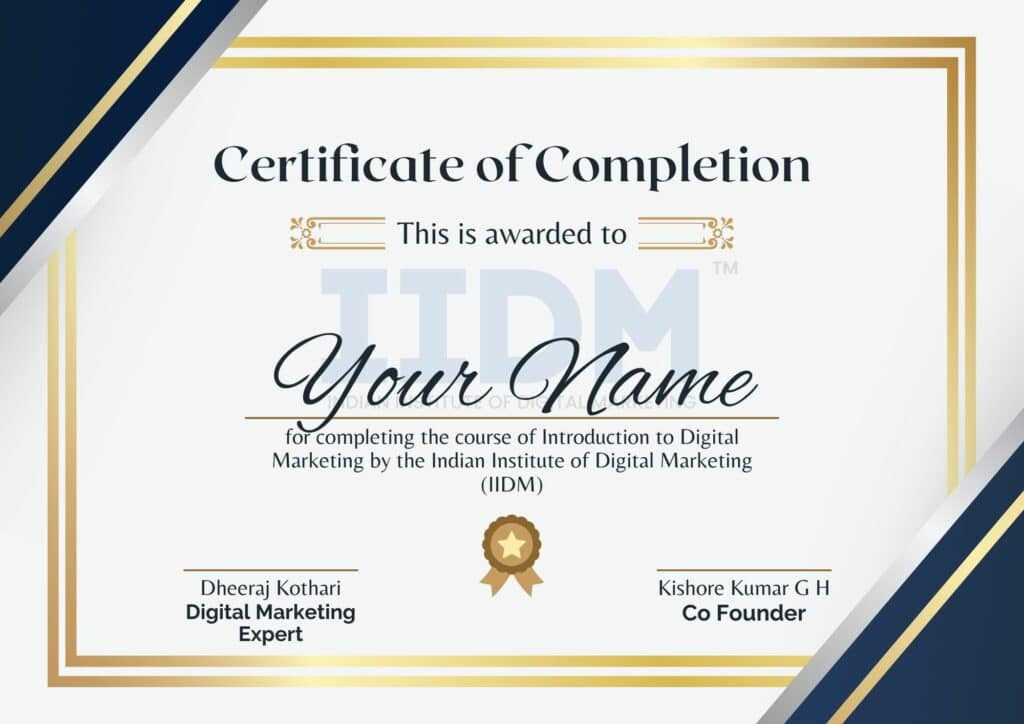Websites have turned into much more than just images and text. Everything from the look and feel to the call-to-actions affect how the site is interpreted. Overall, customers want your website to inspire them, give desired content, and present a streamlined, delightful overall user engagement.
Importance of websites in the digital era
Websites play a critical role in the success of the business. They help entrepreneurs get a competitive edge by expanding their advertising presence or attracting a potential audience online. Additionally, websites allow them to easily showcase their products and services and build confidence and credibility.
Simply said, a business website can provide your company with new prospects and engagement. However, you might be surprised to learn that nine out of ten websites are dormant! That is, they have little to no user traffic, are not updated on a regular basis, and, most importantly, do not convert visitors to customers.
Good Web Design
Strategic web planning and designing is intuitive. You create a product or service to address a certain demand, and the product succeeds. It’s that simple if you minimise the risks of compromising the integrity of your aims and tailoring a part of the website to your interests rather than the work it’s supposed to do. A user-friendly web design with all of the necessary features and flawless functionality can propel your company to new heights.
Website creation has become a need for modern organizations in this chaotic time because it provides numerous benefits. The website can be viewed as a powerful instrument for promoting and growing your business online. Fortunately, making your website more user-friendly is simpler than it ever was. There are so many web designing tools that are very simple to use and quick to grasp. Guess the total number of websites in use today. No guesses? We can guarantee that the total is in the billions!
10 principles of good web design
Website design is difficult, but if done well, it may pay off handsomely for your business. From my experience designing a website, here are 10 principles of good web design that are embodied to create engaging experiences for users. Give it a thorough read!
Keep the web design simple and clear
Convenient, easy navigation and captivating visual hierarchy are the two most important things to consider when designing a website. No matter what your website is about, always keep it basic so that your visitors can explore it easily and quickly. Here is how:
- Whitespace, commonly referred to as Negative space, is a concept that web professionals are quite familiar with. In essence, it’s that blank space you see between the text, images, tables, and other visual elements. Smart utilization of this design element results in a less distracting, more engaging layout that allows the users to reach the desired destination quickly and easily.
- Padding is another tool that makes your website simpler. It is basically the space around the objects. As a rule of thumb, the text should never come into contact with other items. Overall, padding helps users read and recognise the web content easily.
- Designers can also use line spacing for a simpler and more convenient user experience. As the name implies, it is the distance between text lines. When there is no line spacing, the lines of text begin to collide and make the content difficult to read. However, you should note that using too large line spacings can make the lines of text appear to be unconnected to each other, so be precise!
Avoid distracting elements on your website
Site designers only have just a few seconds to catch viewers’ attention before they depart. Having said that, it is their primary obligation to ensure that the website design is ideally optimized for usability and convenience of use. In other words, designers must create a user interface that inspires people to trust them and take action. Many website developers today, however, utilize alert-like distractors in websites because they believe they are effective at attracting visitors’ attention, but in reality, they are not. Instead, they draw attention away from the site’s essential content and elicit a variety of undesirable emotional responses. Overall, it is preferable to avoid using them.
Also, the fonts used on the site should not be distracting. They should be common, easily readable and uniform. Employ no more than two fonts that are web-safe, as this increases the probability that some other individuals browsing your site from other machines will see them. Therefore, while the text will seem great from an aesthetic point of view, for those whose machines do not have that typeface file, some other random font will appear practically everywhere though.
Make sure your site is aesthetically appealing
Never undervalue the significance of the website aesthetics; customers value both beauty and smooth navigation. A precise combination of elegance and lucidity is required. In general, cheaper, lower-quality products have messed-up, ad-oriented layouts which makes site visitors automatically assume that the site is advertising a relatively low-quality product. With that being said, as a designer, you should focus on the crucial aspects needed to push the website beyond function and into exquisite, gorgeous form. The colours, background images, as well as logo of your site should also be carefully picked in this regard. Other factors that should be considered while developing a visually appealing, beautiful website are:
- Fonts
- Imagery
- Tables
- Consistency
- Infographics
- Alt text
- GIFs
- Unified theme
- Bullets and numbering
Web accessibility is vital
This should be self-evident, but the user must always come first while designing anything. Especially when it comes to websites, user needs are far more important. If you are creating web designs but do not meet consumers’ needs, you will indeed make their clients quickly leave the website and go on to another. There are a few things that designers can do to cater to the needs of web users:
- Ensure intuitive navigation
Web users must be able to figure out how to navigate through your website. Keep an eye on your web traffic and make sure it flows from one page to the next. The best way to ensure user-friendly and intuitive navigation is by using commonly used design patterns and visible icons.
- Get feedback from your customers
Make sure to find out what your regular guests want to see on your site. Acquiring direct feedback from your target audience may help you find missing bits that you might not have seen otherwise. People usually know precisely what it is about a website that they dislike. It’s your job to change those nasty remarks into compliments by addressing any issues your clients have.
- Make things as simple as possible
Whenever anyone accesses a website, they would like to accomplish that goal as quickly and efficiently as possible. It is the designer’s responsibility to make executing important activities simpler. Beginning by removing anything that isn’t extremely necessary for each task is a fine place to begin. IIn interactive sites, making CTAs easier is also crucial.
In the UAE, there are many companies currently employing effective web design principles to help clients improve their businesses and give the growth they look for. So, if you also want to have a good-looking website to boost your business , you surely can rely on the experts of Web design Dubai. These professionals have been generating user-friendly yet functional web designs for years, and that too with the lowest possible rates.
Include elements that encourage your audience to approach you
When a visitor arrives on your page, they want to learn whatever they can regarding your goods or services so they can make an informed choice. If a customer has to look for this information, they may suspect you’re hiding something or become irritated and depart for a competitor’s site. The more detailed and transparent info you can provide on what you have to promote and the simpler web design is, the better.
Your site should also be a genuine representation of your company and identity. Your visitors should be able to see a visual link between your brand, printed materials, and physical location right away. A design that delivers this not only boosts the recognizability of your brand but also lends legitimacy and improves the entire image of your company.
Call-to-Action Can’t Stop Users Clicking
Any written directive that prompts an instant reaction or encourages an instant sale is known as a call to action. Using powerful CTA’s at a strategic place in your website is great for making it streamlined and more interactive. That is, visitors who understand how to acquire your products or use your services will be more likely to do shopping quickly. Some of the popular call-to-action buttons that designers use on their websites are:
- Get a quote
- Buy now
- Sign Up
- Order now
- Subscribe
- Get discount
- Book today
Knowing your audience is crucial
The appearance and functionality of your website will be determined by who it is built for and for what purposes. The statistics of the industry, gender, age, and similar interests, will all influence your aesthetic and usability preferences. Recognizing who your intended audience is can help you identify the essential elements for your website. Thus, spend sufficient time necessary in knowing your audience; begin by learning about their goals, needs and objectives. Other questions you must respond to include:
- What level of familiarity do they have with your organization and mission?
- What are your business’s goals, products and services?
- What about the distinguishing demographic data?
- What do you hope to achieve with the website?
- What will be your audience’s motivation for visiting your website?
- Who says you have to go to the website to attain these goals?
- What are their priorities?
Come up with a website design only if you are able to answer these!
Put on visual elements
Incorporating aesthetically pleasing visual components on your website can help you capture more audiences such as compelling, colorful dress images relating to your clothing brand will keep online users on your website for quite a long time and inspire them to investigate other available options. It’s a fact that people are naturally drawn to beautiful things, and the correct aesthetic aspects can help. All in all, the impression you create with visual elements can help you build healthy and competent relationships with potential consumers. If visitors to your website enjoy what they see and believe your company fits their interests, they are more likely to choose your products over the competitors.
Prioritize Website Functionality
Your website is the digital face of your company to the rest of the world. It must look great, reflect your distinct brand identity, inform the world what you do, promote your company’s goals, and perform properly. It also has to get you noticed online by the correct people. There are many elements that influence how long visitors stay on your web pages, and of course, one of them is obviously the site’s functionality. If the functionality is poor, a gorgeous website is worthless. Thus, if you are designing a website, strongly consider the technical aspects. Make sure every hyperlink that has been included works properly, and every button and call to action is placed correctly so that your audience can proceed to the next step with as little effort as possible.
Don’t Forget Mobile Users
People use mobile phones, iPods, computers, and laptops to access the internet. Mobile, however, currently accounts for 25% of all online activity. This implies that a site must be built for mobile phones as well. It must serve a wide range of screen sizes. There seem to be two options here: a fully responsive or a separate mobile site. When a website is designed with a responsive layout, it automatically adjusts to match multiple screen sizes. The second option is to create a distinct mobile site that is mobile-friendly.
Final words
These are the 10 principles of good web design that will immediately assist you in making your website more user-friendly. But keep in mind that ongoing improvements are still necessary if you want to build long-term and sustainable consumer connections. Also, regularly ask your clients what features they would like to see on your site, and then add them.










